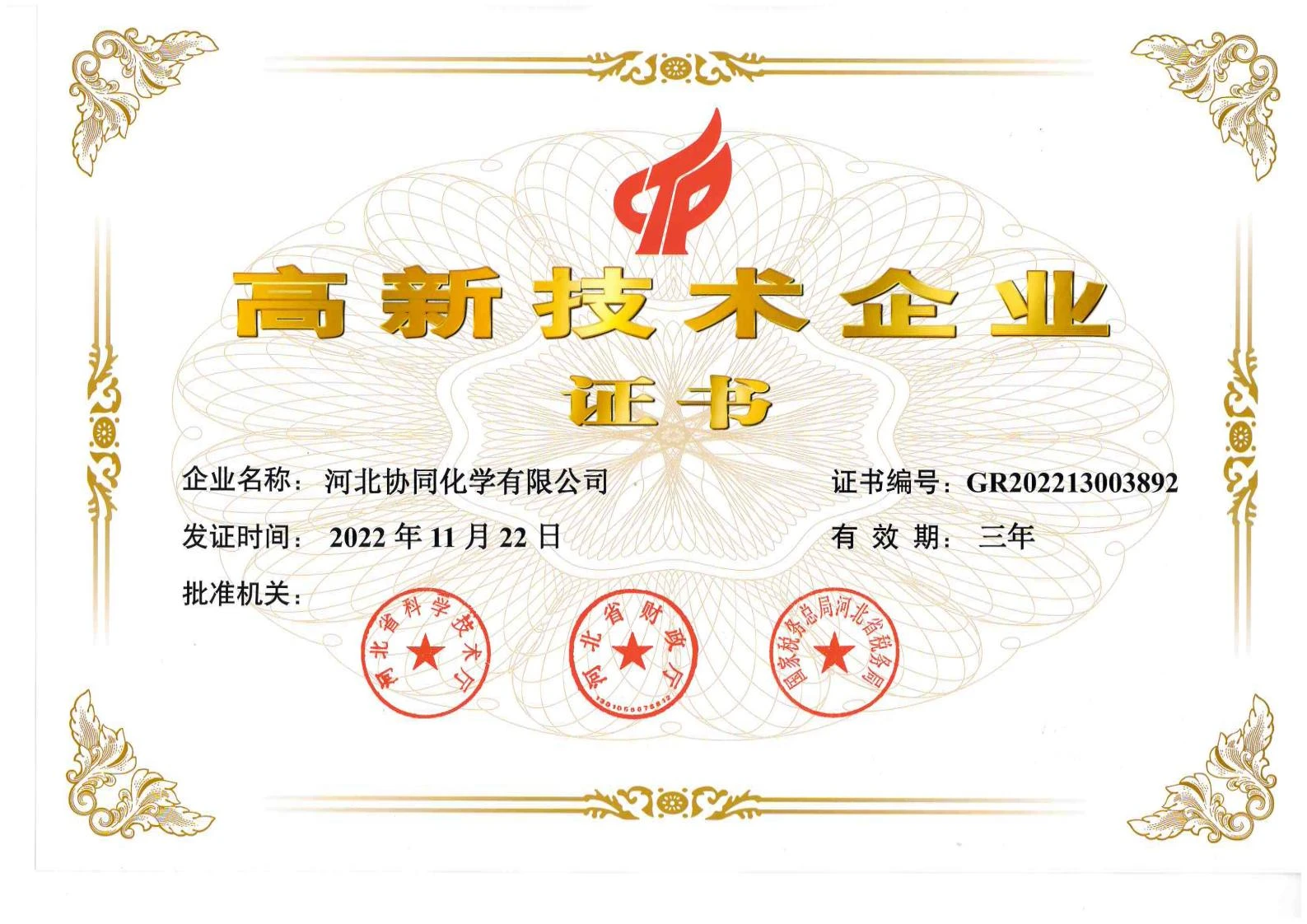
News
Aug . 13, 2024 04:42 Back to list
Sodium Salt of Polyepoxysuccinic Acid and Its Applications in Modern Chemistry and Industry
The Role and Applications of Polyepoxysuccinic Acid Sodium Salt
Polyepoxysuccinic acid sodium salt (PESA) is a versatile compound that has gained significant attention in various industrial applications due to its unique chemical properties. This biodegradable polymer comprises multiple carboxyl and epoxide groups that render it highly effective as a dispersant, chelating agent, and corrosion inhibitor. The versatility of PESA makes it an essential component in a myriad of sectors, including water treatment, detergents, and cosmetics.
Chemical Structure and Properties
PESA is a polyfunctional compound characterized by its epoxide and succinic acid moieties. Its chemical composition allows it to engage in multiple interactions with various substances, enhancing its effectiveness as a dispersant and stabilizer for suspensions and emulsions. The sodium salt form of PESA offers improved solubility in water, facilitating its use in aqueous applications. The presence of both carboxylic acid and epoxide groups contributes to its high binding affinity with metal ions, a feature that is pivotal in preventing scale formation and corrosion in industrial processes.
Applications in Water Treatment
One of the most significant applications of PESA is in the field of water treatment. As a dispersant, PESA helps to keep solid particles, such as sediment and minerals, suspended in water, preventing them from settling and impacting water quality. Furthermore, its chelating properties allow it to bind and sequester metal ions, thereby mitigating problems associated with water hardness and scale formation. The use of PESA in cooling towers, boilers, and other industrial systems leads to enhanced efficiency and reduced maintenance costs, making it an invaluable asset in water treatment protocols.
Role in Detergents and Cleaners
polyepoxysuccinic acid sodium salt

The cleaning industry also benefits from the inclusion of PESA in formulations. Due to its excellent dispersing capabilities, it improves the effectiveness of detergents by ensuring even distribution of surfactants and dirt within the formulation. This enhances the cleaning power of the product, allowing for more effective removal of stains and dirt, even in hard water conditions. PESA’s biodegradable nature is an added advantage, aligning with the growing consumer demand for environmentally friendly cleaning solutions.
Use in Cosmetics
In addition to industrial applications, PESA is increasingly being incorporated into cosmetic products. Its hydrating properties and compatibility with skin make it an appealing ingredient in formulations aimed at moisturization and skin health. The compound acts as a stabilizer in emulsions, helping to maintain the consistency and effectiveness of creams, lotions, and serums. With an increasing focus on clean beauty and sustainable ingredients, PESA presents a responsible choice for formulators looking to enhance product performance while adhering to ethical standards.
Benefits and Environmental Impact
One of the standout features of PESA is its environmental compatibility. Being biodegradable, it poses minimal risks to ecosystems compared to many traditional synthetic polymers. The shift towards using compounds like PESA reflects a broader trend in industry, where sustainability is becoming a paramount concern. By employing PESA in various applications, businesses can achieve their operational goals while also addressing environmental challenges.
Conclusion
In summary, polyepoxysuccinic acid sodium salt is a multifunctional compound that has found applications in a diverse array of industries, including water treatment, cleaning, and cosmetics. Its unique properties, such as excellent dispersing and chelating abilities, coupled with its environmental benefits, position it as a valuable ingredient in modern formulations. As industries continue to prioritize sustainability and efficacy, PESA’s role is likely to expand further, making it a critical component of the future landscape in both industrial and consumer products.
-
Polyaspartic Acid Salts in Agricultural Fertilizers: A Sustainable Solution
NewsJul.21,2025
-
OEM Chelating Agent Preservative Supplier & Manufacturer High-Quality Customized Solutions
NewsJul.08,2025
-
OEM Potassium Chelating Agent Manufacturer - Custom Potassium Oxalate & Citrate Solutions
NewsJul.08,2025
-
OEM Pentasodium DTPA Chelating Agent Supplier & Manufacturer High Purity & Cost-Effective Solutions
NewsJul.08,2025
-
High-Efficiency Chelated Trace Elements Fertilizer Bulk Supplier & Manufacturer Quotes
NewsJul.07,2025
-
High Quality K Formation for a Chelating Agent – Reliable Manufacturer & Supplier
NewsJul.07,2025
